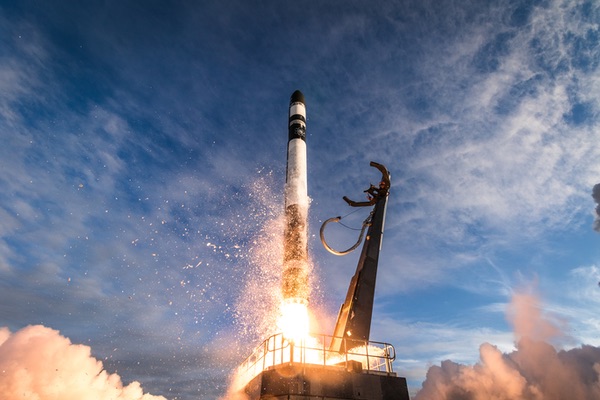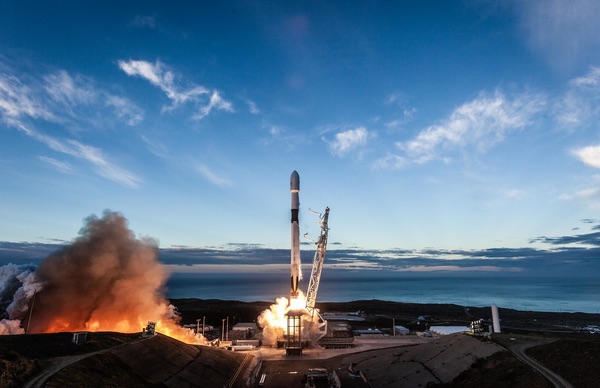The launch industry prepares for a shakeoutby Jeff Foust
|
| “I don’t think there’s actually room for all of us here on this panel,” Shotwell said of the six companies on the panel. |
That tension continues today. More companies are getting into the launch market, or planning new vehicles, both at the large and small end. But, with demand in many cases uncertain—orders for geostationary communications satellites remain depressed, and the business case for low Earth orbit megaconstellations questionable—there is not enough business around to support every launch company.
That was the message from a pair of launch panels at the Satellite 2019 conference in Washington earlier this month. The first panel, May 7, brought together executives from six companies at the large end of the market. Some of them argued that the industry wasn’t big enough for all of them.
“We’re in a really interesting time, I think, in the industry,” said Gwynne Shotwell, president and chief operating officer of SpaceX. “There’s a lot of interest in building new launch vehicles to service the same markets. At the same time, the commercial industry has experienced a pretty significant contraction.”
“So, I don’t think there’s actually room for all of us here on this panel,” she concluded. “There’s probably room for three vehicles in roughly each class of launch.”
Tory Bruno, president and CEO of United Launch Alliance, reached a similar conclusion. He estimated an addressable market, counting both commercial and government missions, of about 30 to 35 launches a year, which he expected to remain flat given the state of the commercial market and a “lull” in national security missions.
“The math behind this is kind of straightforward,” he said. Companies that want to remain viable in the launch market want to do eight to 12 launches a year. Given that estimated demand, “That’s room for four.”
Bruno said he believes two of four companies will be outside the United States: Arianespace and International Launch Services (ILS), which continues to market the Proton despite limited commercial demand for the rocket. “Fortunately, that leaves us two domestically, because that is what’s required for assured access to space,” he said. “We’ll be one of them.”
That would appear to be bad news for new entrants into the market, but those companies offered alternative perspectives about either the demand for launch or how many launches a year is needed to be viable.
Bob Smith, CEO of Blue Origin, took the former approach. “The appetite for data is insatiable,” he said. That’s driving new entrants into the satellite market, fueled by venture capital. Many will fail, he acknowledged, but some will succeed. “New entrants will have an impact on this market.”
| “The math behind this is kind of straightforward,” Bruno said. Given estimated demand, “That’s room for four.” |
The uncertainty is how long it will take for those ventures to stimulate demand. “There’s going to be a launch service impact,” he said. “You can question about how long that’s going to take to develop, or how short it will take to develop, but it will happen.”
Kent Rominger, a Northrop Grumman vice president, said his company is not relying on commercial demand for its proposed OmegA rocket. “The commercial market is tough to predict,” he said. “We didn’t build our business case around this commercial market. It’s really built around national security space and civil.”
He said later that OmegA can be successful at a far lower launch rate than what Bruno estimated was viable. “We can go down to a very low rate,” he said. “As low as two [National Security Space Launch] and a couple of others. That lets us close our business case.”
Ko Ogasawara, vice president and general manager of space systems for Mitsubishi Heavy Industries, said his company is looking at the growing Asian market to provide demand for its new H3 rocket, which will succeed the H-2 vehicle that found little more than a toehold in the commercial market. “We have some ‘geographic sympathy’ with them: no time difference,” he said.
Stéphane Israël, CEO of Arianespace, said the company is seeking to balance commercial and government demand as it transitions from the veteran Ariane 5 to the new Ariane 6 in the early 2020s. That includes making European governments an anchor customer for the Ariane 6, he said, rather than seek launches elsewhere. “This idea of ‘Buy European’—European missions launched by European launchers—is progressing,” he said.
But a factor working against other companies is the voracious appetite of SpaceX. The company said it expects to do about 20 launches this year and a similar number next year, not counting launches of satellites for its Starlink broadband constellation, which are captive to the Falcon 9. “We facilitized four years ago for 40 launches per year,” Shotwell said, based on earlier projections of growth in the commercial market. “So, we’ve got plenty of capacity.”
 Rocket Lab has been one of the few small launch vehicle startups to place payloads into orbit to date, but many more are trying to do so over the next few years. (credit: Rocket Lab/Trevor Mahlmann) |
Culling the small launcher herd
There’s also a mismatch between supply and demand among small launch vehicles, but at a far different scale than at the large end. Dozens of companies—100 or more, by some estimates—are in various stages of development of small launch vehicles that can place anywhere from a metric ton down to a few dozen kilograms into low Earth orbit.
Most agree that there are far more launch vehicles under development than can be accommodated in even the most optimistic projects of smallsat demand, but how many will survive is still open to debate, as another panel at the Satellite 2019 conference May 8 addressed.
“Of the 100-plus companies, my assessment is that you’ll probably have five, six, maybe seven survive,” said Les Kovacs, vice president of business development at Firefly Aerospace, whose Alpha launch vehicle under development is towards the high end of the small launch market. That rocket is scheduled to make its first launch from Vandenberg Air Force Base late this year, although he said it could slip to 2020.
While there is government interest in small launchers, particularly from the national security side of the market, Kovacs said he expected commercial demand to be far more influential in determining how many and which companies do survive.
“It used to be that, in the launch industry, the anchor tenant was always the US government, and that’s not going to be the case here,” he said. “That’s going to flip, and it’s going to be commercial demand that’s going to drive the small launchers in the out years.”
| “We’re not that bullish about the megaconstellations translating into business for small launch,” Wilson said. |
Marino Fragnito, vice president of the Vega business unit at Arianespace, was a little more pessimistic. “I think today the market can probably sustain three systems,” he said, presumably including the Vega, which is among the biggest of the small launch vehicles, and one of the few currently in commercial service. He said the number might increase if some megaconstellations are successful, stimulating demand for replacement launches.
Many small launch startups appear to be pinning their hopes on such constellations, but others are skeptical about how influential they will be. Fred Wilson, business development lead for space systems at Aerojet Rocketdyne, a company not in the small launch business, said on the panel that while his company has seen growing demand for propulsion systems it offers for smallsats, those satellites likely will launch more cost-effectively on larger rockets or as secondary payloads.
“We’re not that bullish about the megaconstellations translating into business for small launch,” he concluded.
Another challenge is that “small launch” covers a wide range of vehicles not necessarily in competition with one another. “In some sense, I could see more competitors in their niches,” said Robert Cleave, chief revenue officer of Vector, which is developing small launch vehicles intended to place no more than 200 kilograms into LEO. “I could see some complementariness between our service offerings which could potentially support more.”
While some small launch providers are emphasizing their potential high launch rates, others are emphasizing that they don’t need such high activity to be successful. “We think we need about four launches per year to close the business case on Alpha,” Kovacs said. “We tend to be a little more conservative.”
Companies on the small launch panel didn’t estimate how long they thought it would take for the current crop of dozens of companies to shake out to the handful they think will ultimately survive. On the large launch vehicle side, any shakeout may take several years to play out, and depend on factors like what companies the Air Force selects for its next set of national security launch contracts.
“I think we’ll always remain on the panels,” Shotwell assured her fellow executives after making her assessment that there was demand for about three large launch vehicles. Or, maybe not: a decade ago the commercial launch market was dominated by Arianespace, ILS, and Sea Launch. Neither ILS nor Sea Launch were on that panel of large launch vehicle providers at Satellite 2019.
Note: we are temporarily moderating all comments subcommitted to deal with a surge in spam.
